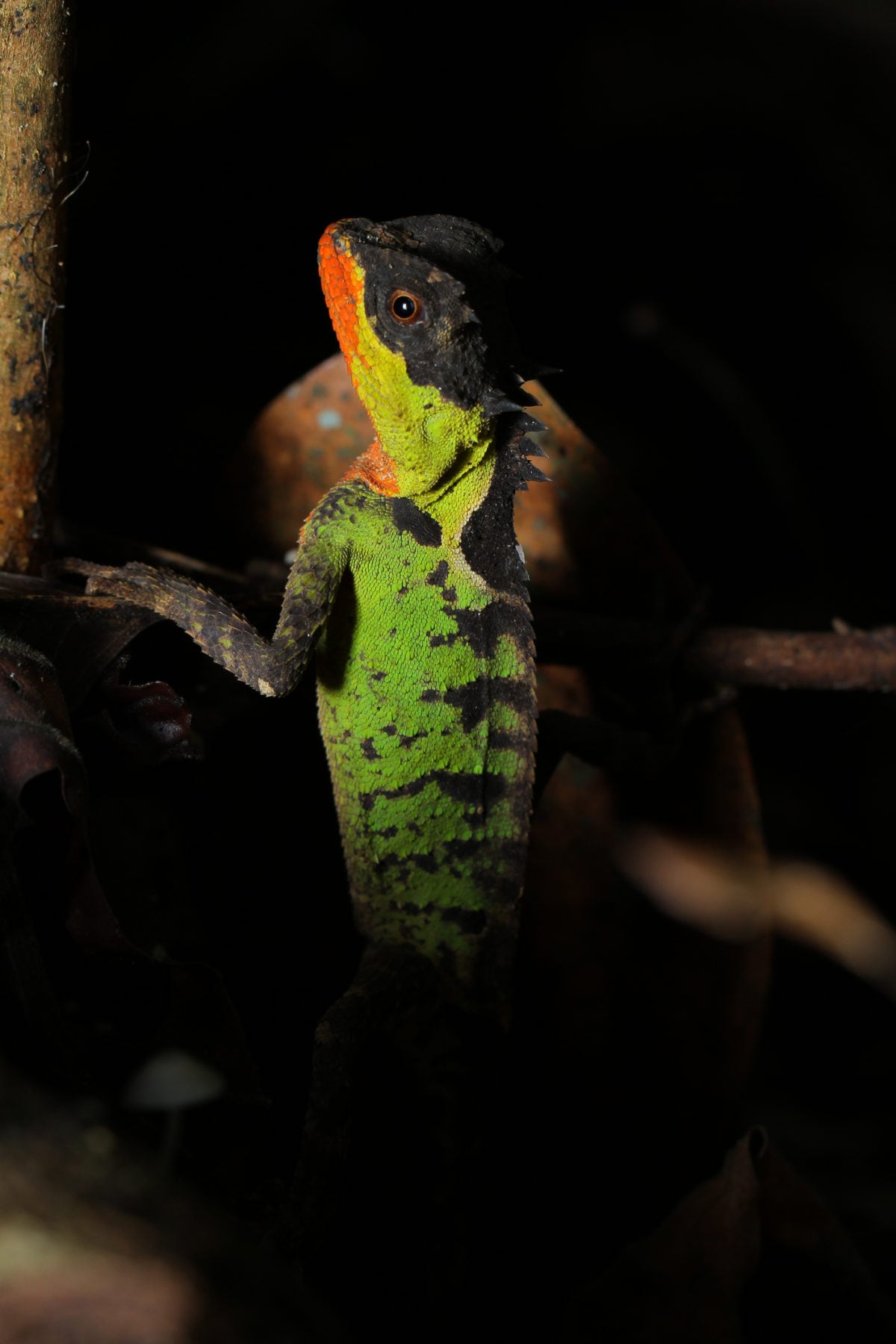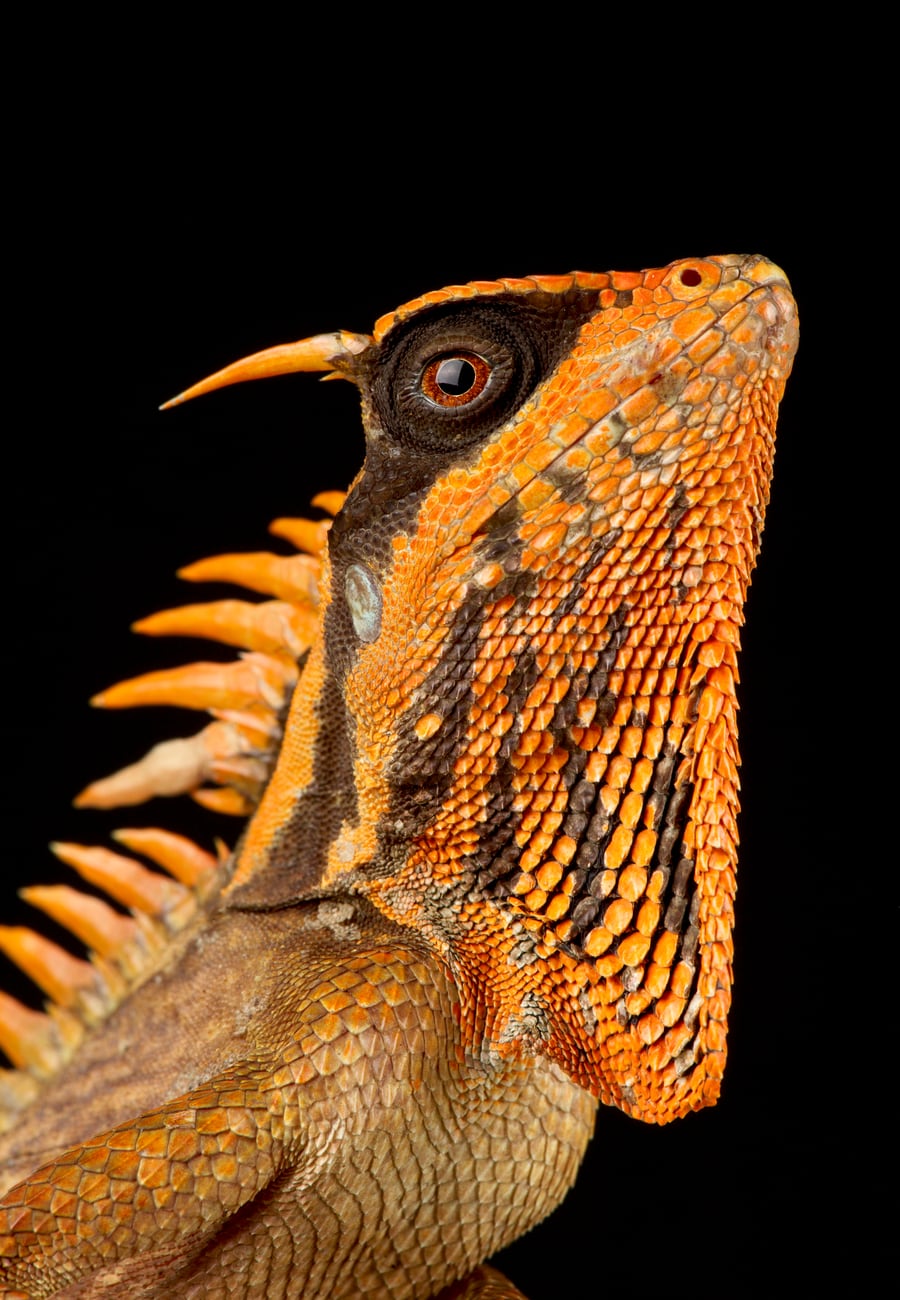The Phuket horned tree agamid has mighty Godzilla spines

Bec Crew
Bec Crew

MEET THE PHUKET horned tree agamid (Acanthosaura phuketensis), a species that’s only been known to science for a few years, but is one of the most striking reptiles in the world.
A member of the Acanthosaura genus of lizards, a group known as the mountain horned dragons, it’s native to the few remaining forest patches in Phuket, Thailand.
Discovered by Belgian biologist, Olivier Pauwels, who has roughly 100 new species under his belt so far, the Phuket horned tree agamid was introduced to the public back in 2016.
It was announced alongside an array of new species found in the Greater Mekong region – one of Earth’s richest biodiversity hotspots – such as this rainbow-headed snake (Parafimbrios lao) and this sweet little orange newt (Tylototriton anguliceps).
Mountain horned dragons lizards might look intimidating, but they’re only interested in insects and the occasional fish. There are 14 known species in the Acanthosaura genus, spread throughout Southeast Asia, and their spines aren’t the only cool thing about them – their colours are absolutely stunning.
Here’s the brown picklenape (Acanthosaura lepidogaster), which is the just the worst name for something so beautiful:

And here’s Natalia’s mountain horned dragon (Acanthosaura nataliae), discovered in 2012, which comes in a red, black, and brown variety, green, or a bright orange:

Despite being so striking, these lizards have been one of nature’s best-kept secrets. One species was only just discovered last year, long thought to be a brown picklenape, but now known as Acanthosaura tongbiguanensis.
Here are the three species I just mentioned side by side (or head by head).
It probably comes as no surprise that the pet trade is all over these species. Poaching is a major threat to wild populations, as is a loss of habitat. But, as this very enthusiastic biologist explains, they make great pets – if you are acquiring them legally and responsibly!
For another impressive baby dragon, check out the blue-eyed anglehead.

